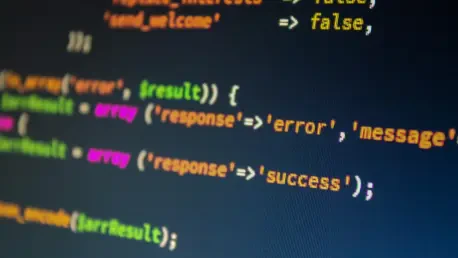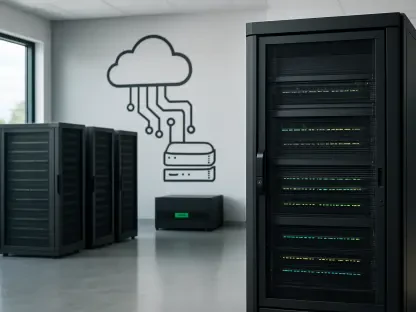Dive into the world of cutting-edge software development with Maryanne Baines, a renowned authority in cloud technology. With her extensive experience evaluating cloud providers, tech stacks, and product applications across various industries, Maryanne brings a unique perspective to the table. Today, we’re exploring the emerging trend of vibe coding—a practice where developers use broad AI prompts to generate actionable code. Our conversation delves into the essence of vibe coding, its transformative potential, the risks it introduces, and how it fits into the broader software development landscape. We’ll also discuss who it’s best suited for and what the future might hold for this innovative approach.
How would you describe vibe coding to someone who’s completely new to the concept, and what sets it apart from traditional coding methods?
Vibe coding is essentially a way of using AI to generate code based on high-level, often vague prompts or ideas, rather than writing every line manually. Think of it as describing what you want in plain language—like “build me a login page with a modern look”—and letting the AI fill in the technical details. Unlike traditional coding, where developers craft each piece of logic and syntax themselves, vibe coding leans heavily on AI to interpret intent and produce something usable, sometimes even deployable. It’s a shift from hands-on control to a more conceptual, guiding role for the developer.
In what ways does vibe coding accelerate the software development process?
It’s a game-changer for speed. Writing code line by line can be incredibly time-consuming, especially for repetitive or boilerplate tasks. Vibe coding lets developers bypass that grunt work by having AI churn out functional code in seconds or minutes. This means prototypes can be built faster, ideas can be tested sooner, and projects can move from concept to reality at a much quicker pace. It’s particularly helpful in early stages when you’re iterating on designs or trying to meet tight deadlines.
What are some of the key risks or challenges developers face when adopting vibe coding?
One of the biggest risks is losing a deep understanding of the code itself. Since the AI generates it, developers might not fully grasp how it works under the hood, which can be problematic when something breaks or needs customization. There’s also a higher chance of missing bugs or security vulnerabilities because you’re not scrutinizing every detail. It’s a more hands-off approach, and that detachment can lead to oversights that wouldn’t happen with traditional coding where you’re in the weeds of every decision.
How does vibe coding affect other parts of the software development life cycle, like peer reviews or deployment?
It can create some friction. For instance, in peer reviews, it’s harder for team members to evaluate code they didn’t write and might not fully understand, especially if the AI’s logic isn’t intuitive or well-documented. Deployment can also be tricky if the generated code doesn’t align with an organization’s standards or infrastructure. Vibe coding often focuses on the “writing” part but doesn’t always account for the bigger picture of integration, testing, and maintenance, so teams need to adapt their workflows to accommodate these gaps.
Who do you think vibe coding is best suited for, and who might find it more challenging to adopt?
It tends to work best for senior developers who have the experience to spot flaws or inefficiencies in AI-generated code. They’ve got the intuition to know when something looks off and can tweak it accordingly. On the other hand, junior developers or non-technical folks—like citizen developers—might struggle. Without a strong coding foundation, it’s tough for them to validate the output or even frame effective prompts. They might end up with code they can’t use or trust, which can be frustrating.
Why is providing context to AI so crucial for vibe coding, and how can organizations ensure they’re doing it effectively?
Context is everything. AI doesn’t just need to know what code to write; it needs to understand the organization’s goals, standards, and workflows. For example, how does the company prioritize projects? What are its security policies? Without this backdrop, the AI might produce code that’s technically correct but useless in practice. Organizations can help by documenting their processes and feeding that into the AI system, or by training teams to include specific details in their prompts—like mentioning the target platform or compliance needs—so the output aligns with real-world needs.
Looking ahead, how do you see vibe coding evolving, and what improvements are needed to make it more reliable?
I think vibe coding has huge potential, but it’s still in its early days. Right now, the biggest limitation is the lack of transparency—developers need better tools to understand and debug AI-generated code. We also need AI models that are more attuned to organizational context and less prone to introducing security flaws. In the future, I see vibe coding becoming more integrated with development environments, maybe even offering real-time explanations of its choices. To get there, we’ll need advancements in AI interpretability and stronger collaboration between developers and AI systems.
What’s your forecast for the future of vibe coding in the software development world?
I believe vibe coding will become a staple in certain areas of development, especially for rapid prototyping and non-critical applications. As AI gets smarter and more reliable, it could handle more complex tasks, potentially reshaping how we think about coding roles. But I don’t see it fully replacing traditional coding anytime soon—there will always be a need for human oversight, especially for high-stakes or custom projects. My forecast is that within the next five to ten years, vibe coding will be a hybrid tool, blending human creativity with AI efficiency, and it’ll be exciting to see how that balance plays out.









